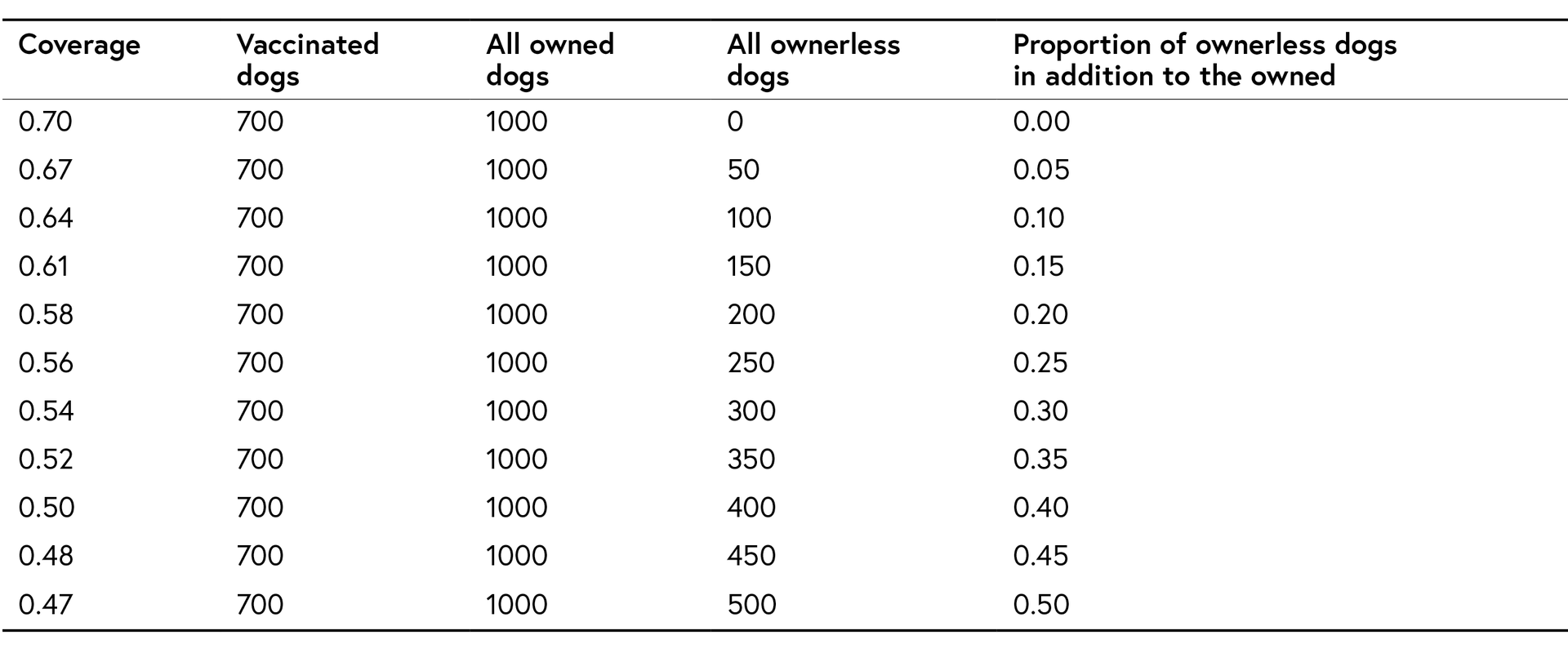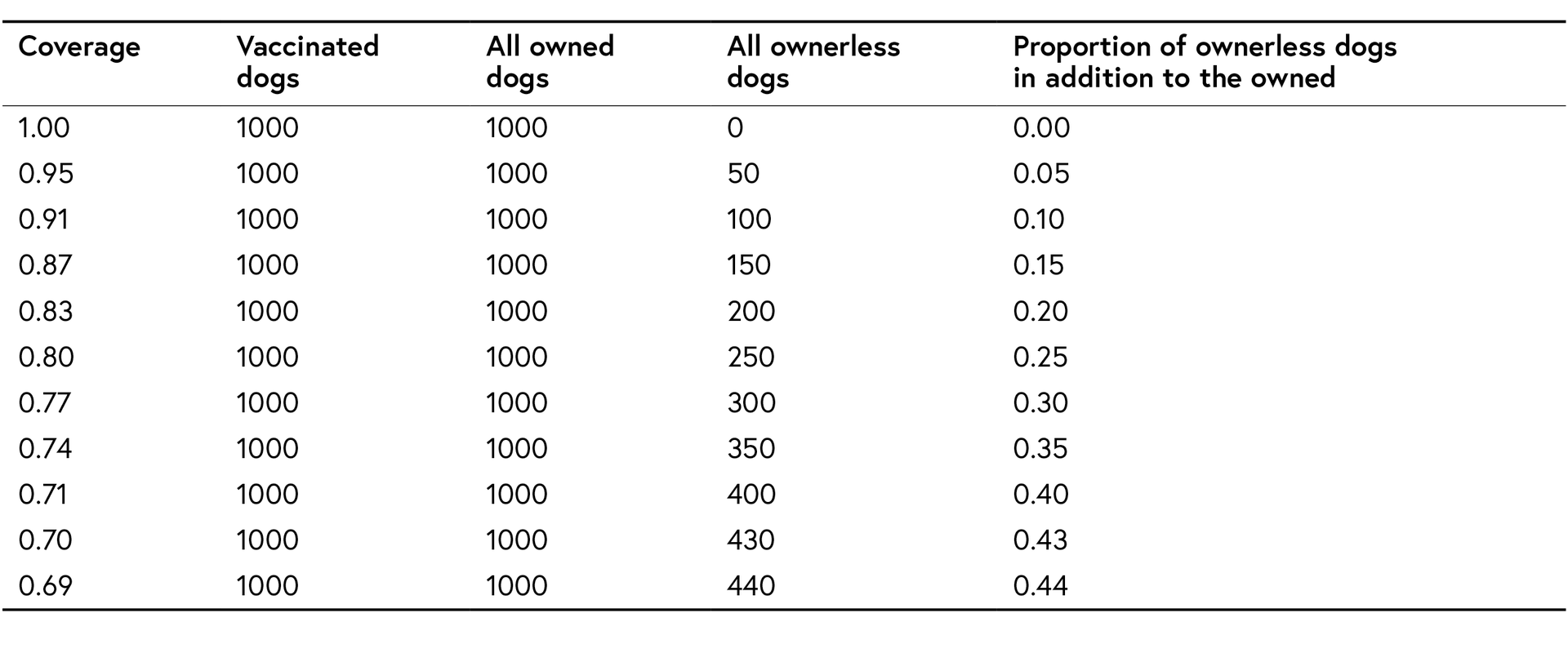ONE HEALTH CASE STUDIES II
5.7
Check your understanding of vaccination coverage
To check your knowledge on estimating vaccination coverage, think about the problem of ownerless dogs.
We can consider the proportion of ownerless dogs as a proportion of the owned dogs and write the formula for the vaccination coverage as follows:

Assume we have 1000 owned dogs, of which we have vaccinated 700. If the proportion of ownerless dogs rises, the overall coverage falls. Try to estimate the overall vaccination coverage in relation to a rising number of ownerless dogs from 0 to 50%, in steps of 5%.
Solution: you should find decreasing coverage, as shown in the table below.

Table one: vaccination coverage depends on the proportion of ownerless dogs
© Jakob Zinsstag
At some point, the proportion of ownerless dogs becomes so important that even if we could vaccinate all owned dogs we could not reach an overall coverage of 70% any longer. At what proportion of ownerless dogs will this no longer be possible?
In order to understand the solution, consider this second table:

Table two: at what proportion of ownerless dogs can we no longer reach an overall vaccination coverage of 70%? © Jakob Zinsstag
As shown here, it is no longer possible to achieve vaccination coverage of more than 70% when the proportion of ownerless dogs is higher than 43%, even if all owned dogs could be vaccinated.
License
University of Basel
Downloads
